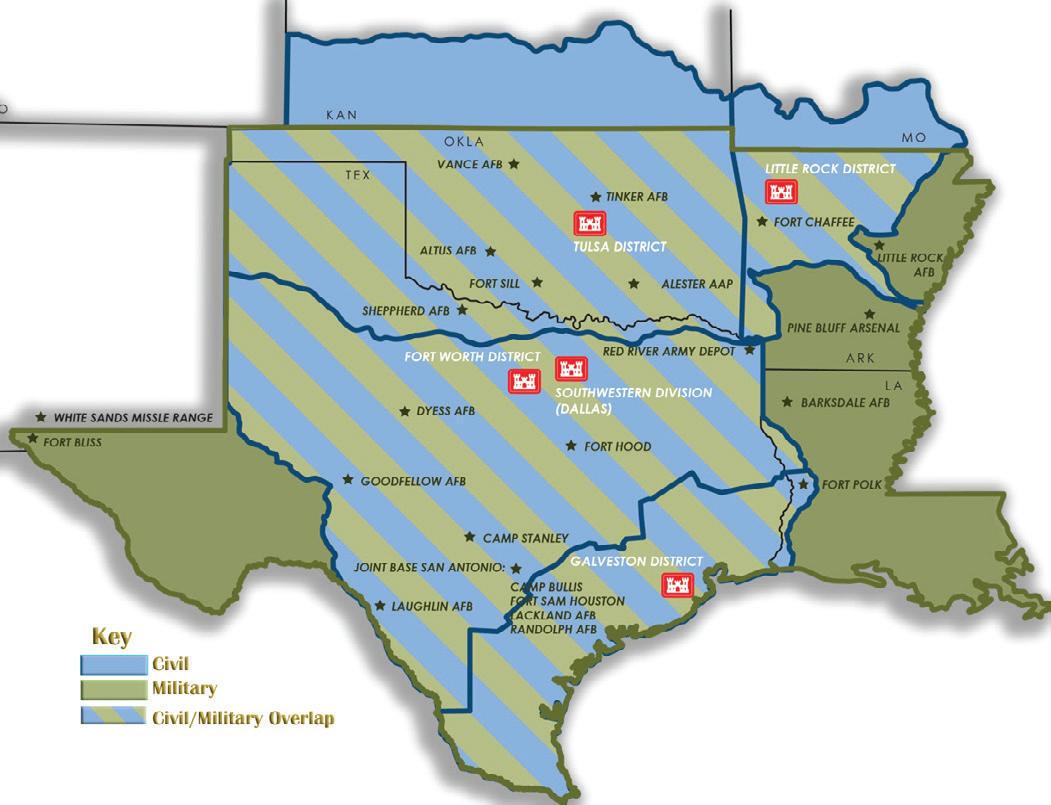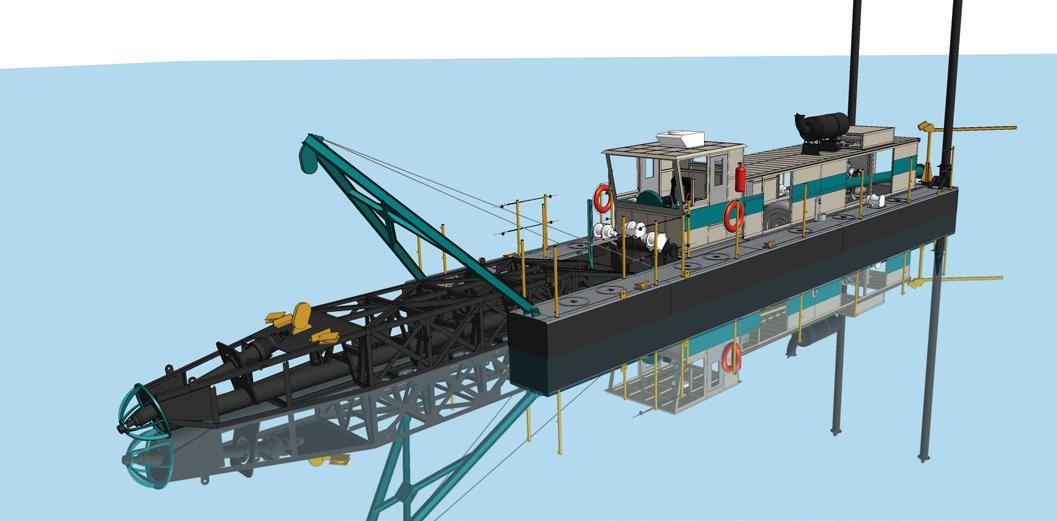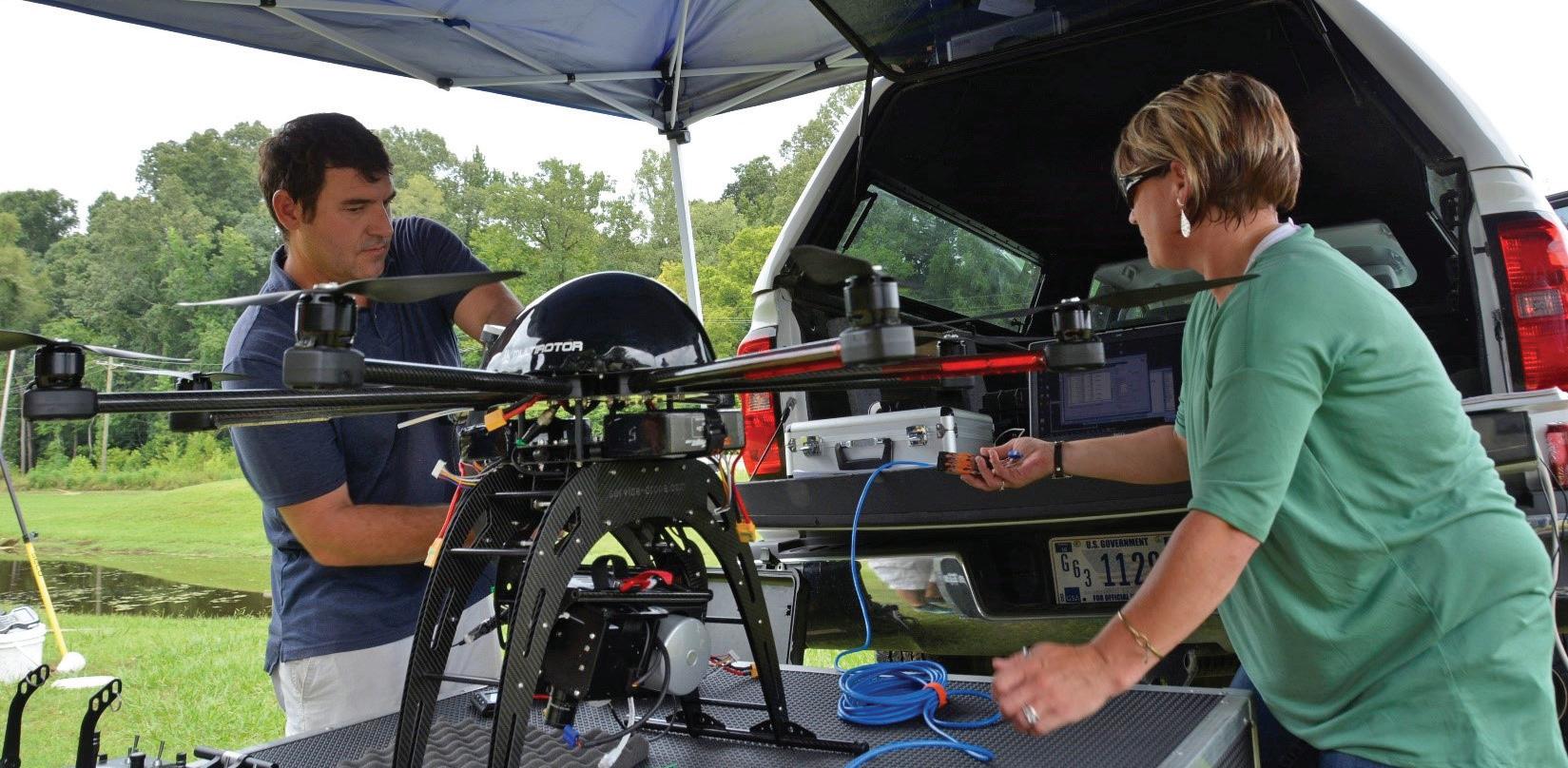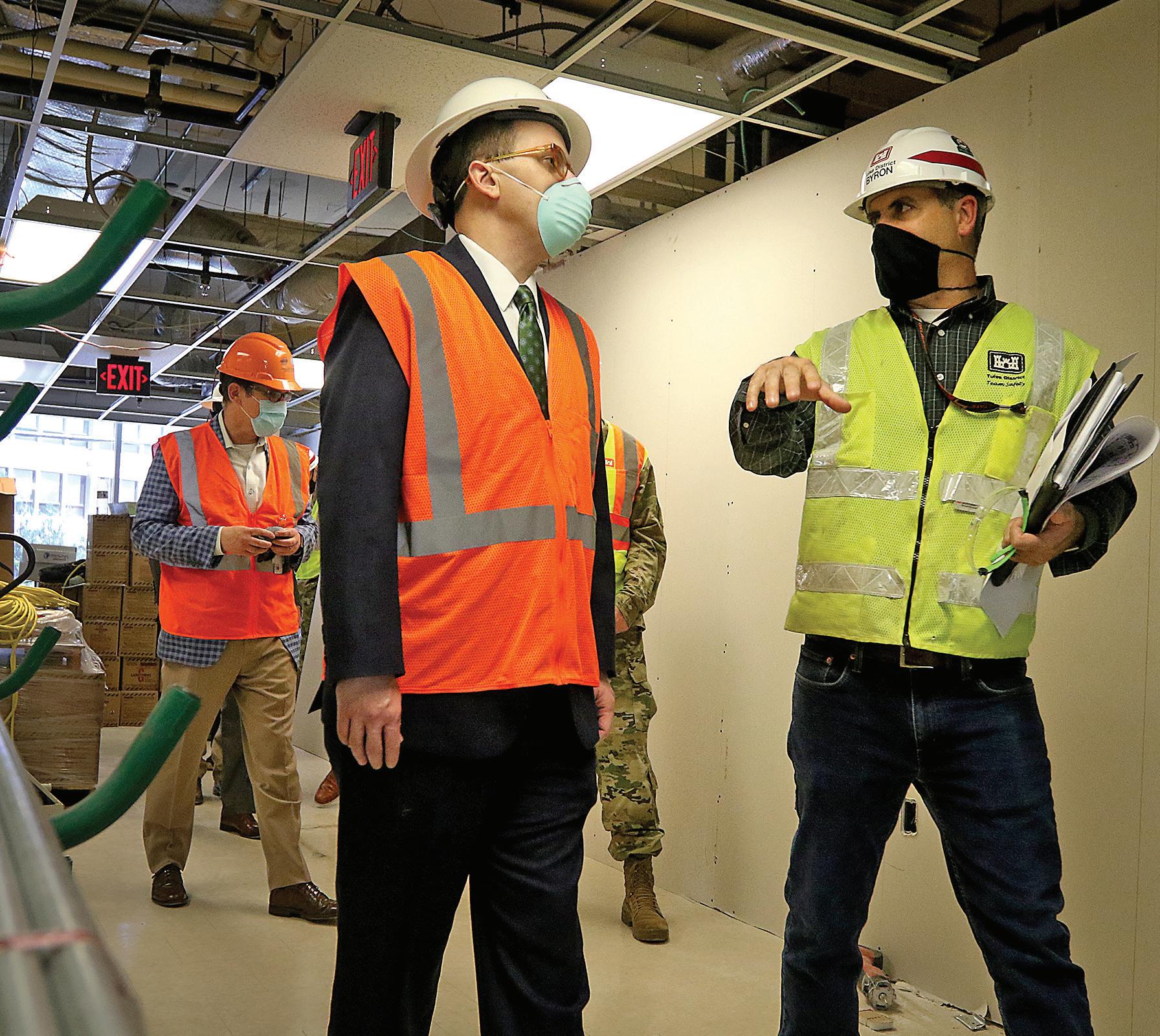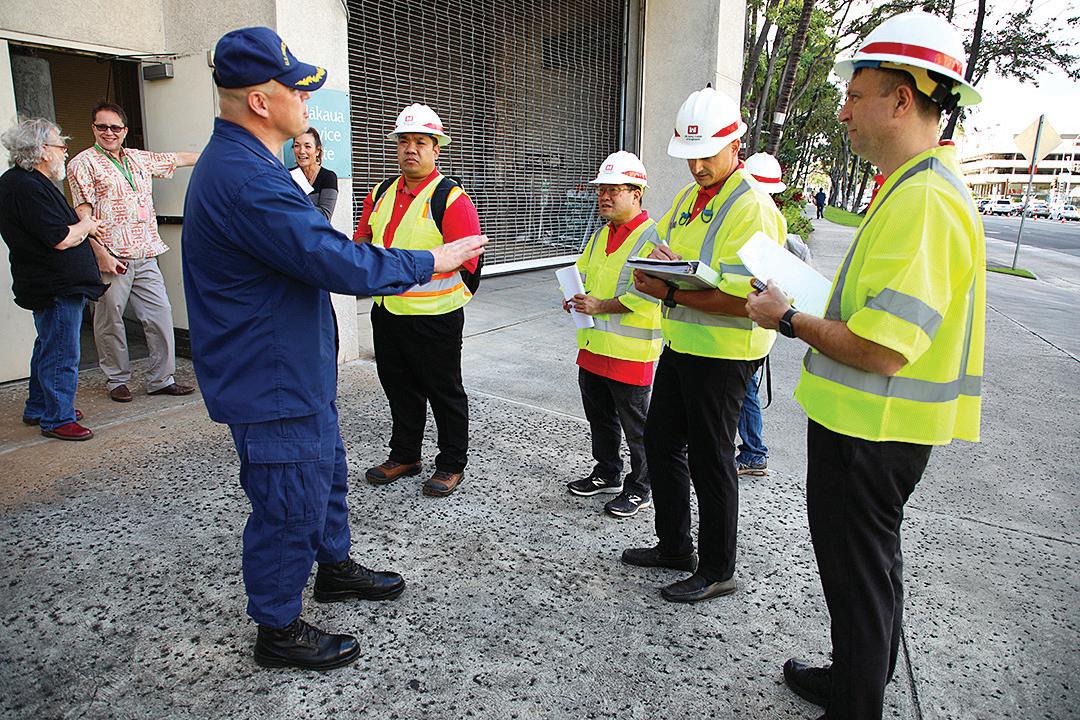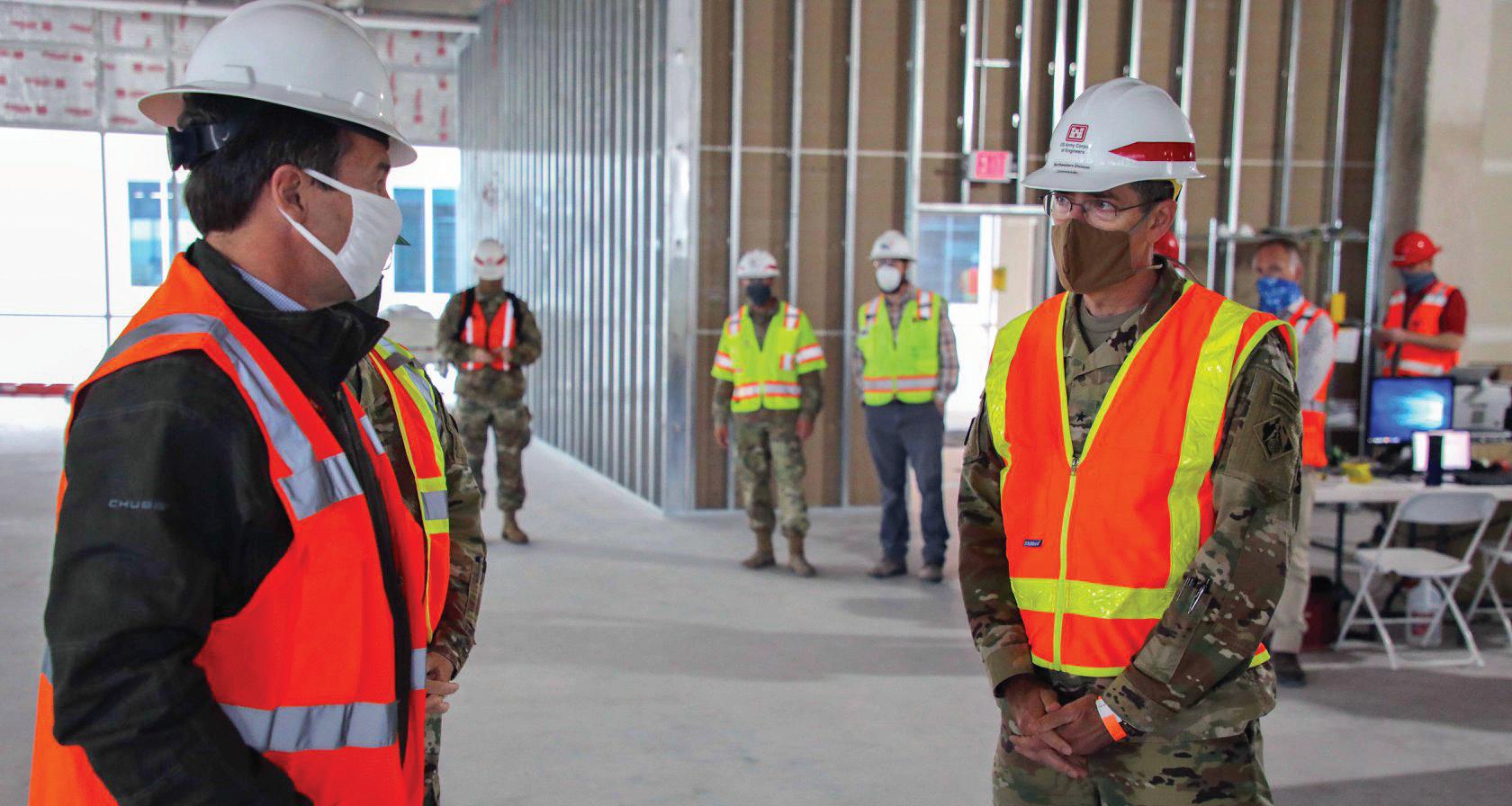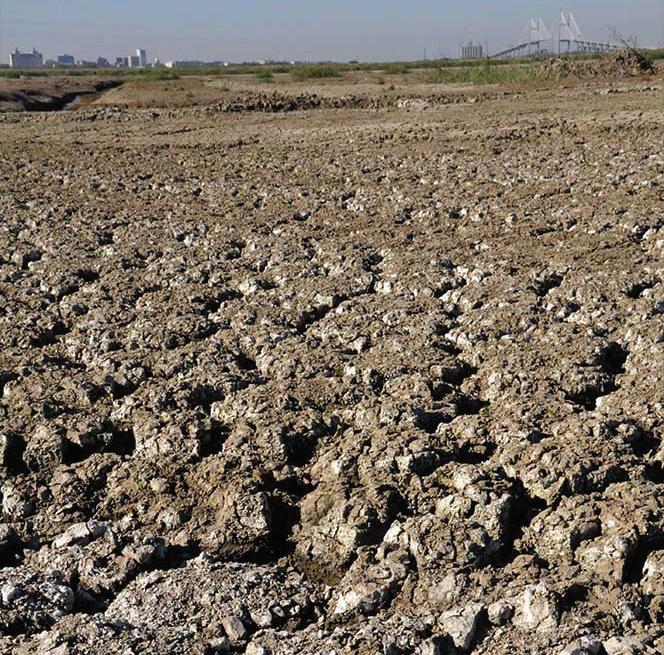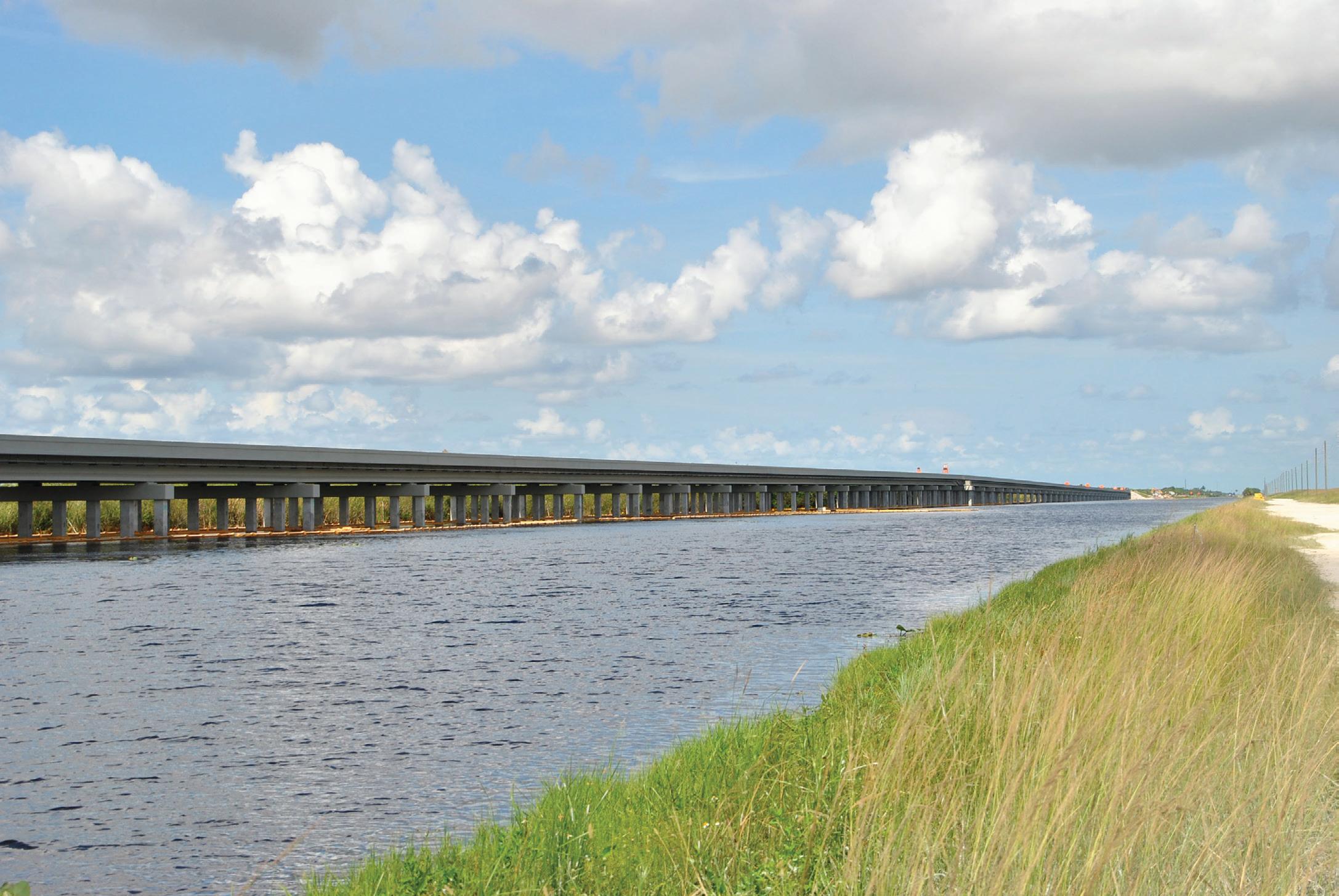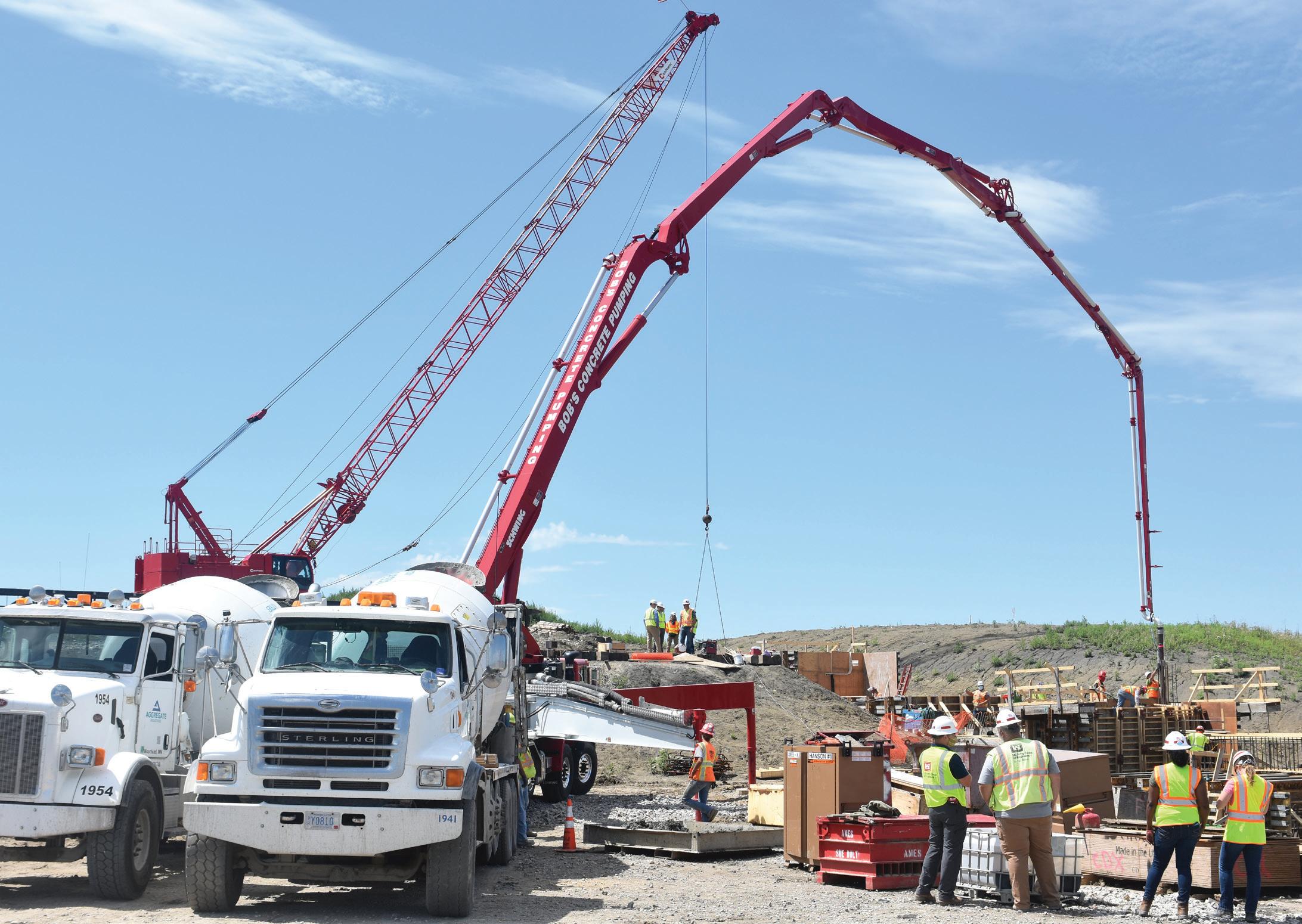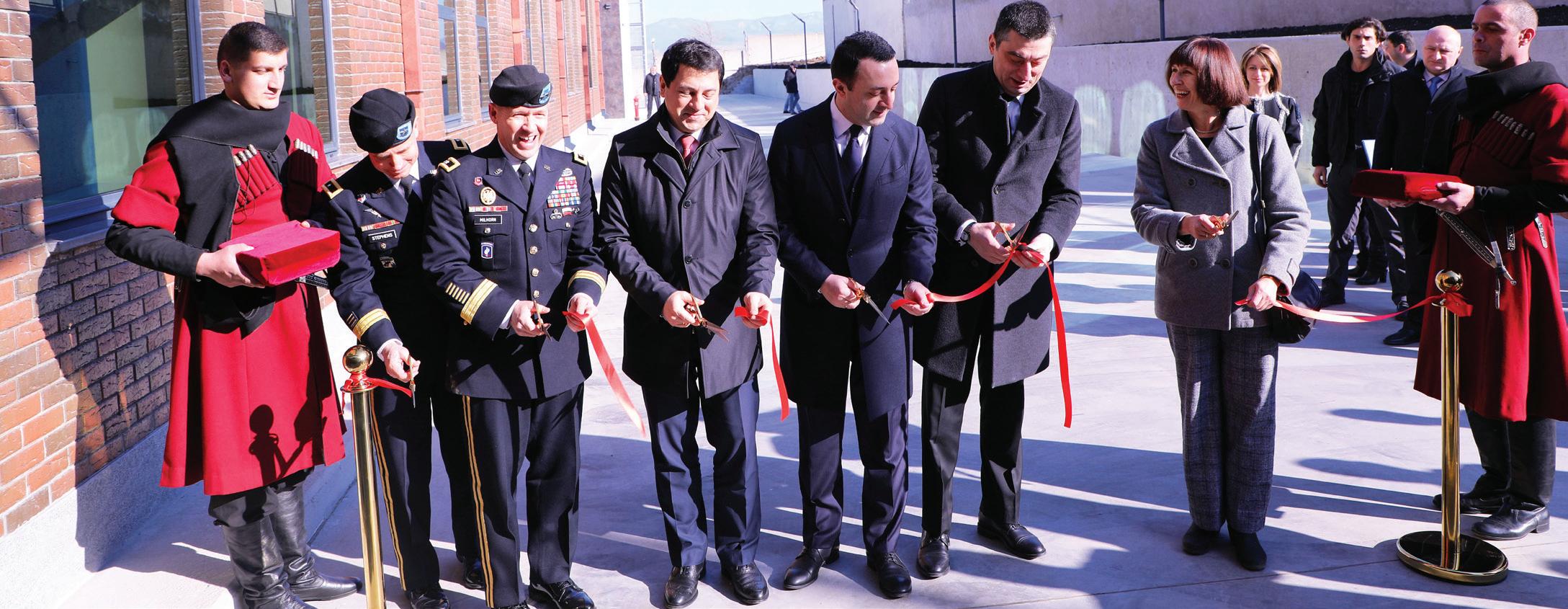SOUTH ATL ANTIC DIVISION
through the report’s exhaustive analysis and presenting findings through geographic information system mapping. The study team dedicated hours each week to taking one-on-one calls with citizens, engaged more than 1,000 community members through joint virtual webinars with the city, and made print copies of the study’s draft report available for zero-contact pick up outside the district’s downtown office. The district received sweeping and constructive feedback across every facet of the Charleston community. Homeowners, teachers, realtors, engineers, local government officials, and historic and environmental groups all submitted feedback on the draft report. This input, as well as the study’s partnerships and ongoing collaboration with local, state, and federal agencies, are vital to USACE’s commitment to public service and ensure USACE develops a solution that is both effective and aligned with the interests of the community. 50
Left to right, Maj. Joe Owens, Lt. Col. Rachel Honderd, and Wes Wilson walk through Waterfront Park in downtown Charleston, discussing aspects of the Charleston Peninsula Coastal Flood Risk Management Study, which aims to provide a feasible solution to addressing coastal storm risk in the downtown area.
Over the next six months, the team will review all public input, further refine the study’s tentative measures, and conduct successive study analysis. These refinements, including those on storm surge wall alignment, effects on the surrounding communities, viewshed impacts, nonstructural elements, and environmental considerations will be available for comment during a second public review period for that purpose in early 2021. All submitted comments will be addressed in the final report. In the meantime, the district will update the frequently asked questions section on the study’s website to address the public’s top questions. n

